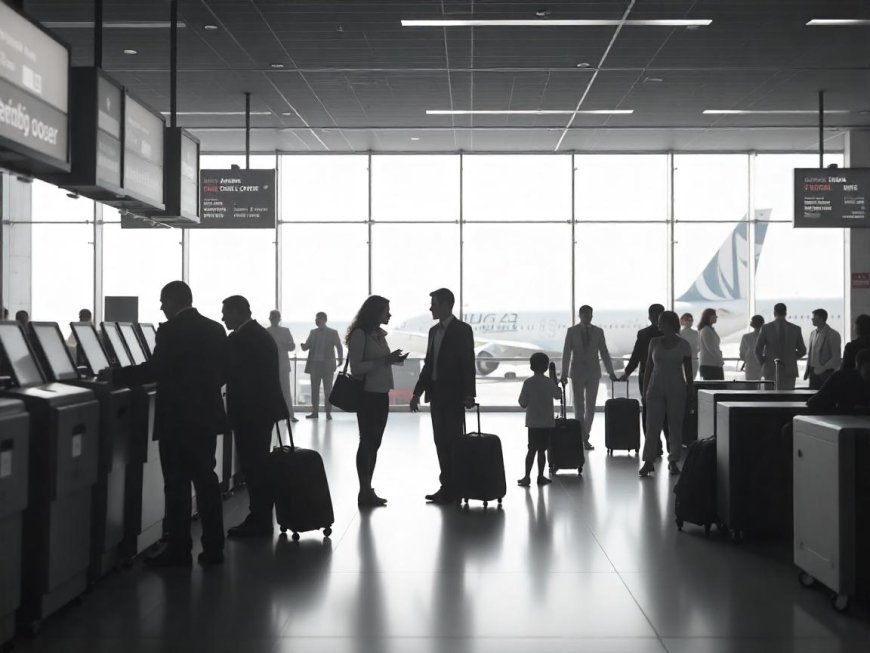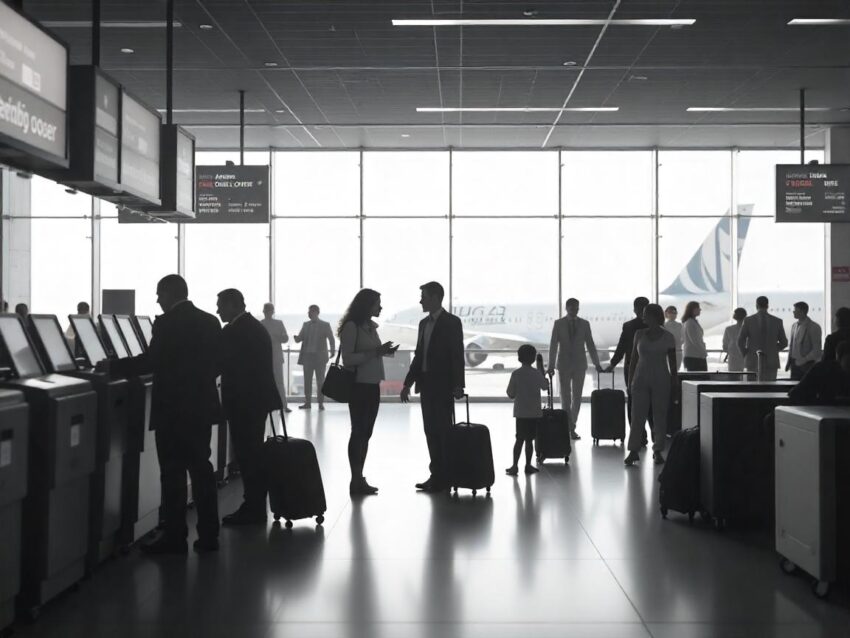US Air Travel Shows Resilience Despite Revenue Dip In Early 2025, Here’s What You Need To Know Right Now


June Q2 figures in 2025 painted a broadly positive picture for the U.S. travel and tourism industry despite a small decline in revenues – especially in the airline industry. Domestic travel agencies in the United States reported $52.3 billion in ticket sales from January to June, according to the Airlines Reporting Corporation (ARC) – just 1 percent lower than those over the same period in 2024. But beneath this small dip in dollar amounts is actually a hopeful story: more people are flying.
Bookings through travel agencies for passenger trips rose 2 percent on year. Domestic travel increased 2 percent, and international travel increased 3 percent, a sign that Americans are not only traveling more, but also traveling overseas in higher numbers.
Those figures indicate a strong consumer appetite for travel but the economic headwinds facing the industry that includes airlines, travel agencies, hotels and destinations have not dissipated.
Tourism Demand Proves Durable
Hike in number of visitors indicates deeper strength of tourism demand. A large portion of this growth continues to be driven by leisure travel as Americans make up for years of pent-up demand and changing lifestyle priorities post-pandemic. Foreign destinations are benefiting as well, particularly as more countries relax visa requirements and ramp up tourism advertising.
Steve Solomon, a chief commercial officer with ARC, put the trend in context: “Airlines and travel agencies had to deal with a quickly shifting economic landscape in the first half of the year. ARC’s data paid off, despite added uncertainty, to demonstrate the resilience of demand for air travel and the critical role of commercial aviation in bringing people and businesses together.”
Indeed, the industry’s resilience reflects a public unwilling to give up on travel, even if airfares edge higher or economic prospects turn more clouded.
June Reflects Stabilization, Not Slowdown
June 2025 was a case in point of this dynamic balance. Overall airline ticket sales in the month were flat year-over-year at $7.6 billion, with American and Co compared with a rise of 3% in domestic and international passenger trips. The average ticket rose slightly — by 2 percent — but that did little to change the overall volume.
One especially interesting trend was the 7% y-o-y rise in OTAs ticketed. This spike reflects a more general move toward digital consumption, with users increasingly looking for seamless platform experiences and dynamic pricing that commonly comes with OTAs. Bookings made through leisure and corporate travel agents each declined by 3%, indicating a redistribution of how and where travelers shop for flights.
This split also reflects generational preferences and the growing expectations of consumers, especially digitally-savvy younger travelers for whom self-service and digital-first solutions are key.
The NDC Era Takes Flight
There’s also another major shift taking steam and it’s related to the increased use of New Distribution Capability (NDC) – a set of industry standards for the air travel sector to enable the distribution of air products and services in a more efficient, cost-effective and customer-friendly manner. In June 2025, NDC transactions represented 21.9% of all ARC-settled sales, compared to 21.5% a year prior. Almost 1,000 travel agencies completed at least one NDC transaction in the month.
This change presents both challenges and opportunities for travel and tourism companies. Although NDC enables more customized, packaged fares, it remains a work in progress for agency systems. If you can pivot, you may win big serving clients the game of M&A change.
Economic Undercurrents And Business Travel Readjustment
The 1.0% fall in total revenues over the 5 May to 2 November 2018 reporting period, triggered in part by economic headwinds—softening airfares, inflation-weariness and changing consumer behaviour. Companies are also tightening their travel budgets, which may be reflected in the 3 percent decline in corporate bookings.
This means business travel, long the bread and butter of airlines’ balance sheets, is being strategically rethought. Remote work, virtual meetings and a focus on return on investment are changing when and why companies take to the skies.
But from a tourism perspective, this has opened the door for vacationers and hybrid “bleisure” (business and leisure) travelers to take their place, and airlines have been reworking their routes and schedules, shifting capacity from business-heavy weekday hubs to vacation-friendly weekend hubs.
What’s On The Horizon: Adaptability As A Strategic Imperative
And as the U.S. travel industry navigates the rest of 2025, its agility will prove to be its greatest strength. The demand from consumers is not in question — the numbers demonstrate people want to travel. The question is how the industry will adapt to shifting booking habits, new distribution technologies and changing economic indicators.
The future of aviation, and therefore tourism, will depend on navigating these intersecting lines. For travel marketers and service providers, success will hinge on the capacity to predict traveler needs — not just react to them.
In the meantime, the skies are bustling, the hunger for exploration undiminished, and the tourism industrial complex continues to hum — if not roar — at least through the middle of 2025.
The post US Air Travel Shows Resilience Despite Revenue Dip In Early 2025, Here’s What You Need To Know Right Now appeared first on Travel And Tour World.






